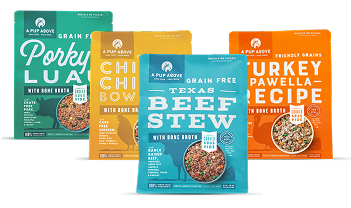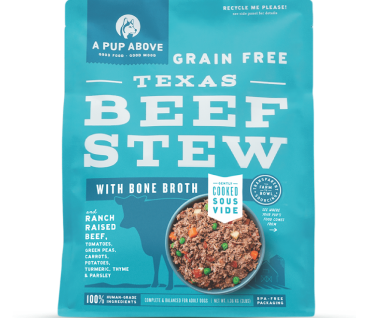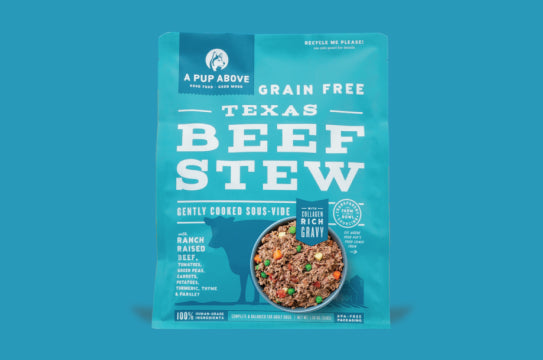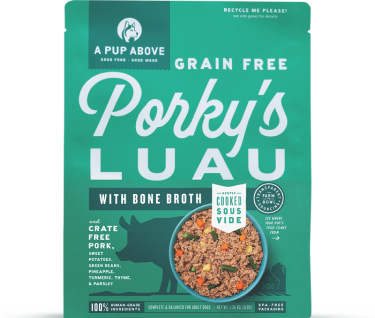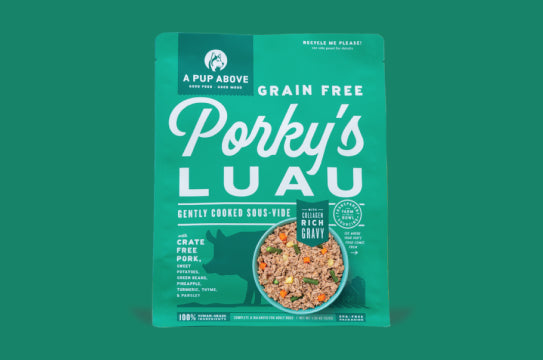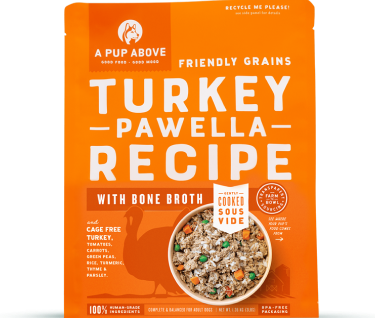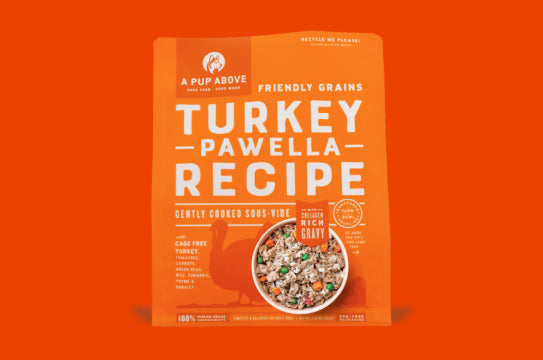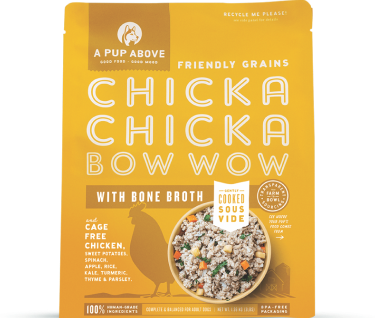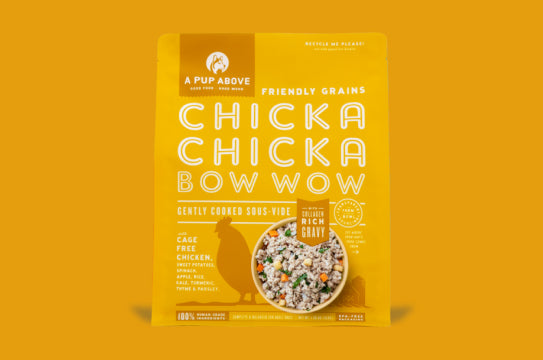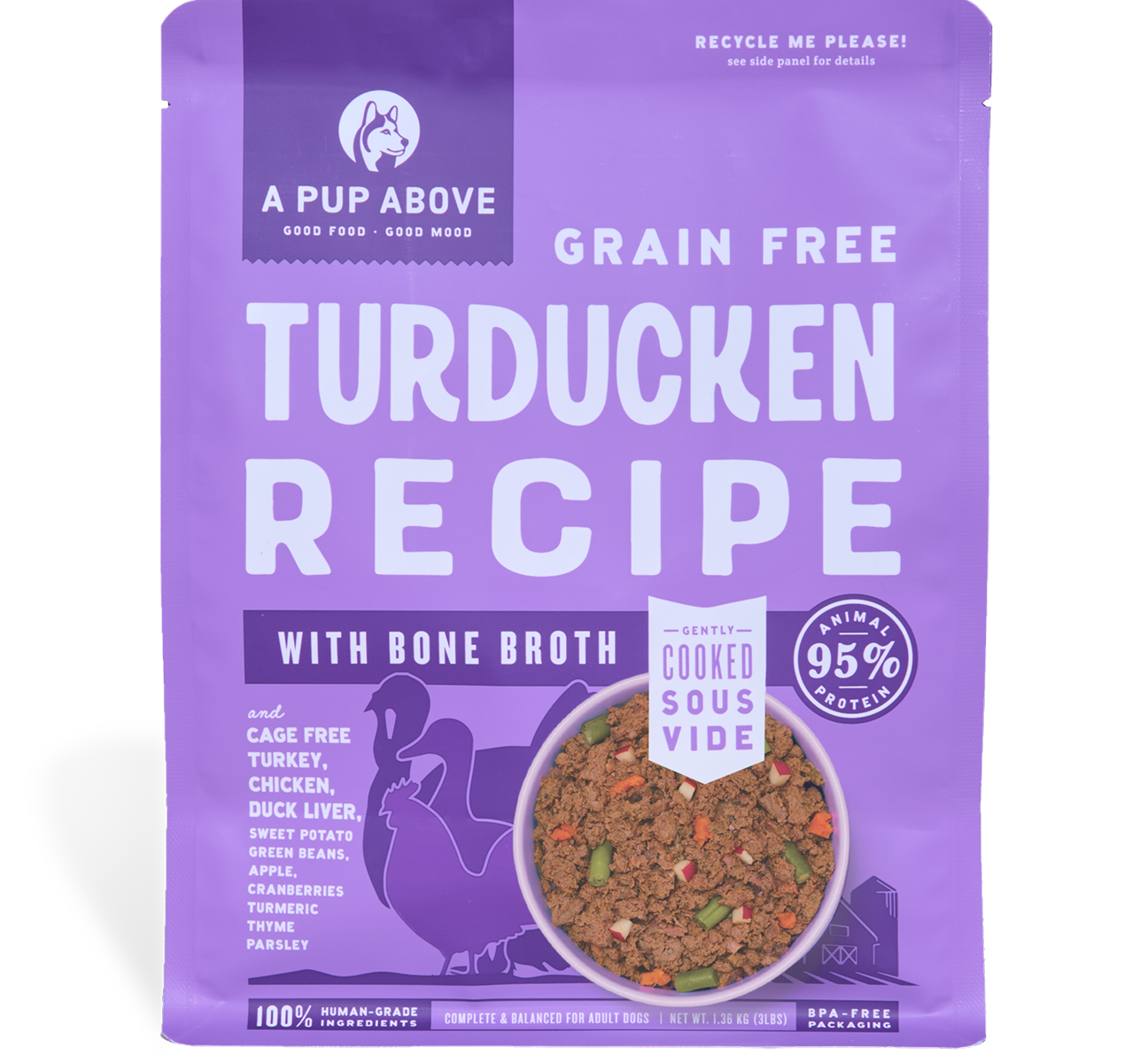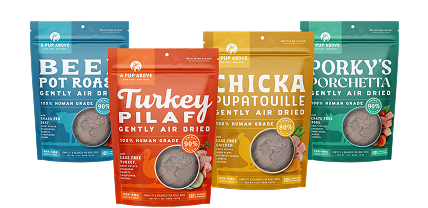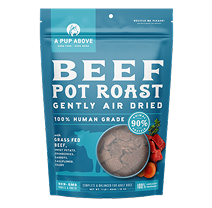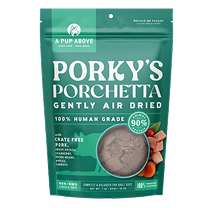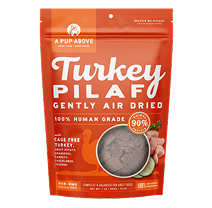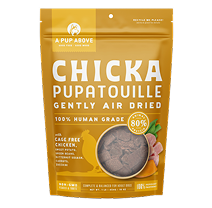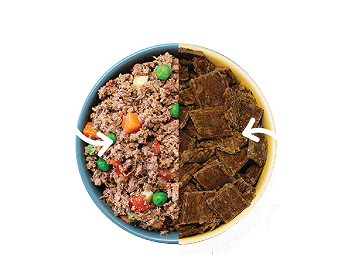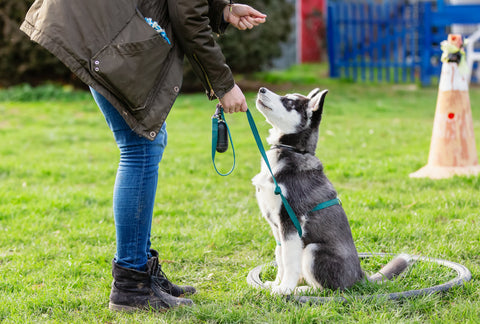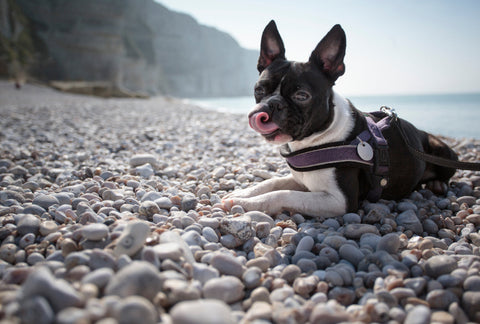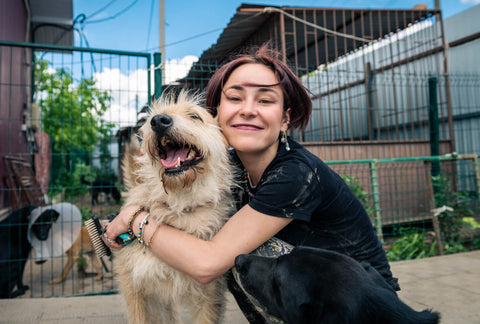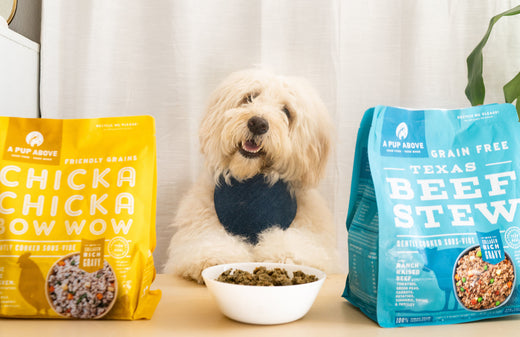
Why My Dog Isn't Eating & What To Do With Loss of Appetite
Dog’s gotta eat, right? But if you’re the loving human of a dog who’s stopped eating all of a sudden, you’d say, “Wrong — my dog is not eating at all!”
Normally, your pooch whines, begs, and practically stalks you when you’re eating something they want to taste — and the excited dance they do at suppertime is something to see. When a love of food is that clear, it can be worrisome when your dog seems to have no appetite.
But just like for you, food isn’t just fuel for your dog. Eating is part of their emotional life, too. Looking at some simple potential causes can help you figure out why your dog is showing a loss of appetite so you can take steps to remedy the situation.
Let’s count down some common reasons for changes in your dog’s eating behavior — plus take a look at when dog loss of appetite may signal more serious health concerns.
What Does It Mean When a Dog Loses Its Appetite?
When a pup loses its appetite, it can be a sign of various underlying issues. This condition, known as anorexia in dogs, could indicate something as simple as a change in routine or a new environment. Dogs are sensitive to their surroundings, and factors such as a new home, new pet, or alterations in mealtime routine can disrupt their eating habits.
A sudden loss of appetite can also be linked to more serious health concerns. Medical conditions like kidney disease, pancreatitis, or dental disease can cause discomfort or pain that deters dogs from eating. In some cases, digestive problems, constipation, or the presence of a foreign body in the digestive tract may be to blame.
Also, psychological factors like separation anxiety or stress due to changes in family dynamics can contribute to a decreased appetite. Dogs may also refuse food if they’re experiencing discomfort from issues like poor-quality dry food or stale kibble.
Pet parents should observe their dog's eating habits closely and consider any recent changes or symptoms. If the loss of appetite persists beyond a couple of days, it is crucial to consult a veterinarian. They can help identify the underlying cause and recommend appropriate treatment to restore your pup’s interest in mealtime.
When Should I Be Concerned About My Dog Not Eating?
If you notice your dog steering clear of the food bowl, it’s essential to monitor the situation closely to determine when to be concerned. While occasional changes in appetite might not be a huge deal, persistent or severe lack of appetite definitely warrants attention.
For example, if your pup has refused food for more than a couple of days, it could indicate a more serious issue. Look out for additional symptoms such as weight loss, vomiting, diarrhea, or lethargy. These signs may suggest underlying health problems, such as kidney disease, pancreatitis, or gastrointestinal issues.
Dental disease can also impact a dog’s ability to eat comfortably. If your dog seems to struggle with chewing or has bad breath, dental issues might be a factor. Similarly, a foreign body stuck in the digestive tract can cause pain and prevent your dog from eating.
Changes in behavior or appetite that coincide with recent health issues or medication should be evaluated. New medications or vaccinations can sometimes cause temporary appetite loss, but if this persists, it’s crucial to consult your veterinarian.
All this being said, if your dog shows signs of distress, like excessive drooling or signs of abdominal pain, seek veterinary advice immediately. These could be symptoms of serious conditions such as kidney failure or parvovirus. Prompt action ensures your dog receives the necessary care to address their condition and restore their health.
What Are Some Reasons My Dog May Not Be Eating but Is Still Drinking?
Your Dog Is Stressed Out
Pet behavior is shaped by routine — and change can be hard on your dog’s comfort level. Look around your life for changes that you may have taken in stride, but your sweet puppy didn’t. You might realize your dog stopped eating due to stress.
Once you identify stressors, you can find ways to help your dog past feelings of no appetite. Here are a few ideas to consider that might add up to a dog not eating.
-
New Environments. If you’ve recently moved or are currently traveling with your dog, it will take time for your dog to adjust to new surroundings. Some dogs get anxious when they are in an unfamiliar environment and need time to adjust before they can eat normally.
-
New Additions. Any new additions to your environment? Whether it’s a new roommate, baby, or another animal) the shift can create stress for your dog, and make eating difficult for a time. In most cases, when a dog has had time to adjust, it will return to eating as usual.
-
Uncomfortable Situations. Sometimes dogs pick up on our stress, too. Have you been working hard, pacing the floor, or staying up all hours? Is a new baby crying, or have there been loud arguments lately? These are just some scenarios that can stress your dog out and decrease appetite. Even running appliances like the vacuum or garbage disposal can put your dog on edge.
If you suspect a stressor might be behind your dog’s loss of appetite, allow a few days for adjustment. Observe whether your dog is getting used to any shift in living arrangements. If you think stressful noises are a factor, keep things calm and hold appliance-oriented chores for after your dog eats. If stress is the issue, you should see positive changes within a few days to a week.
Your Pup May Be Picky or Bored
Are you a picky eater? Dogs can be picky, too. Some dogs love beef but aren’t so fond of chicken. Some dogs like certain vegetable flavors but hate others. With careful observation, you can discover what your dog friend really enjoys eating.
One thing to keep in mind is that as your dog ages, it may begin to reject foods it once enjoyed due to changes in sense of smell and taste. Consider introducing softer, aromatic, flavorful foods such as A Pup’s Above’s slow cooked recipes that make food more palatable for older dogs who have stopped eating.
Would you like to sit down to the same meal every night? While some dogs love their dog food and don’t want to try anything new, your dog may have stopped eating out of food boredom. Some dogs enjoy a bit of variety in dining. The same flavors each day may not be enticing enough for the palates of an adventurous pooch or curious canine.
If your dog is not eating, don’t buy huge portions of food they may hate. Whether you’re trying to entice a picky pup or create variety for a bored fur baby, go for a sampler pack. A Pup Above offers a sampler pack of four formulas that can help you find your dog’s favorite. If your dog seems bored with their food, a sampler pack can make it easy to try switching things up!
You’re Overfeeding Treats
We all love our dogs. Spoiling a beloved pooch with a treat here and there is completely okay. But if your dog depends on treats in place of its regular food, that’s a problem. A dog may have stopped eating because they expect treats to be their main food source. If you feed on treats too frequently, this is a pattern that you, as the owner, must break.
Likewise, feeding your dog human food scraps — like those scrumptious pieces of sausage or bacon they beg for — is okay now and then. However, if you give in too often, your dog ends up wanting to dine at the table instead of at its doggy bowl. You might think your dog has no appetite, but it’s more that your dog has a taste for your dinner!
If your dog is not eating their regular food, look carefully at your treat behaviors. Doggy treats should comprise just 10 percent of a dog’s daily calories.
Consider scaling back on treats and spacing them throughout the day, so your dog doesn’t fill up on “snacks.” As well, limit the amount of human food you feed your dog to get your dog accustomed to consistently eating regular dog food.
The Food You’re Feeding Is Stale
Dogs are highly sensory beings. They don’t like old food that’s stale and spoiled. You may not notice that the dog food you’ve purchased is outdated, but your dog does, and it may not want to eat stale kibble. Make sure to check the expiration date on dog food to ensure you are buying the freshest food possible for your pet.
Better dog food brands should make it easy for you to assess freshness — which becomes critical if your dog has stopped eating. To avoid the “is my dog food spoiled” guessing game, choose a brand that guarantees freshness. For example, A Pup Above formulas come individually vacuum-sealed so you know your dog is getting fresh food at every meal.
If you’re feeding kibble, be sure to use a specially designed dog food container that will resist bacteria growth and seal air-tight to preserve freshness. Even with a special container, you may find a big bag of dog food will go stale before a smaller dog can eat through it all. Consider buying food that’s bagged in a size that matches your dog’s needs.
Kibble Just Isn’t Dog Food
When it comes to food, there is a perception that dogs will eat practically anything. And when people think of dog food, they typically picture kibble.
But in reality, dog food isn’t kibble! And when it comes right down to it, would you want to eat kibble? Maybe your dog is showing a lack of appetite because they’ve decided kibble just isn’t food for them.
Poor quality food doesn’t go unnoticed by your canine companion. Though a healthy appetite and a healthy dog go hand-in-paw, dogs do have preferences when it comes to their food. They may stop eating if what you are serving them if it doesn’t seem appealing.
In our experience, dogs get visibly happier when we feed them fresh, juicy meat-first food rather than dried out kibble made with filler ingredients. If your dog has an apparent loss of appetite, seek out fresh food made from healthy meat to tempt those taste buds. Now may be a good time to ask — did you know A Pup Above gets the highest quality rating from Woof Whiskers?
4 Reasons To Head to the Vet
If you’ve thought through the top four reasons your dog may be less than excited at the dog bowl but they’re still not eating, it’s time to consider health problems that can cause changes in your dog’s appetite.
As a precautionary measure, seek the professional assistance of a veterinarian if you think a health issue may be causing or contributing to your dog’s lack of appetite. This is especially true if you’ve observed no positive progress in two to three days of observing your pet.
Here are 4 common health issues to think about:
-
Dental Problems. Untreated dental issues can cause pain that can make it seem like your dog has poor or no appetite, but are really making it difficult to eat even if your dog is hungry. If you notice your dog attempting to eat unsuccessfully, check your dog’s mouth for possible dental and oral issues. Aging also increases the likelihood of dental issues, which can make eating more difficult and cause a loss of appetite in senior dogs. It is important to address dental issues before they escalate and cause more pain, discomfort, and lack of food intake.
-
Recent Medications/New Vaccinations. Lack of appetite is one of the side effects commonly associated with newly administered medications and vaccinations. In most cases, your dog should regain its appetite in a few days once it is feeling back to normal. Check with your vet if you suspect medications are causing appetite changes in your pup.
-
Acute Illness. Your dog can exhibit a decrease in appetite due to an upset stomach related to acute illness from eating something that doesn’t agree with its gastrointestinal system — from trash to plants sprayed with pesticides. Acute illnesses may cause diarrhea, vomiting, and lack of appetite. Your dog will usually resume eating once they start to feel better.
-
Chronic Illness. In serious cases, chronic conditions such as cancer, organ failure, or severe infections deplete a dog’s appetite. If you’ve noticed that your dog has stopped eating consistently, it is best to go to the veterinarian. Your veterinarian will provide the proper examinations to determine what is causing your dog to consistently show lack of appetite.
Recovery of Loss of Appetite in Dogs
Recovering from a loss of appetite in dogs involves several steps to identify and address the underlying cause. The approach can vary based on whether the issue is related to stress, dietary preferences, or a medical condition.
1. Identify the Cause
Start by evaluating any recent changes in your dog’s environment, such as a new home, new pet, or changes in routine. Stressors like these can lead to a temporary loss of appetite. If the issue seems to be behavioral, providing a calm environment and consistent routine can help.
2. Adjust Diet
If the problem appears to be related to food preferences or boredom, try introducing a variety of high-quality, palatable options. For picky eaters, consider offering wet food or adding a small amount of low-sodium chicken broth to their dry food. Ensure the food is fresh and not stale.
3. Hand-Feeding
If your dog is reluctant to eat from their food bowl, try hand-feeding them small amounts of food. This can be particularly useful if the loss of appetite is due to stress or anxiety.
4. Medical Intervention
If the loss of appetite persists, consult your veterinarian to rule out underlying medical conditions. They may suggest appetite stimulants or recommend a specialized diet. Addressing health issues such as dental disease, gastrointestinal problems, or kidney disease is crucial for recovery.
5. Regular Monitoring
Keep track of your dog’s eating habits and overall health. Regular follow-ups with your vet can ensure that any ongoing issues are addressed promptly.
Wrapping Up
Getting to the reason why your dog has stopped eating is essential. It might be something quite simple that you can easily solve for your canine. Take the time to observe, monitor, and apply necessary changes to spark your dog’s appetite again. If you don’t see any positive changes within a few days, seek guidance from your veterinarian.
Sources:
Anorexia in Dogs | VCA Animal Hospitals
Kidney Disease in Dogs: Signs, Symptoms, and Treatment | American Kennel Club
Top Stories
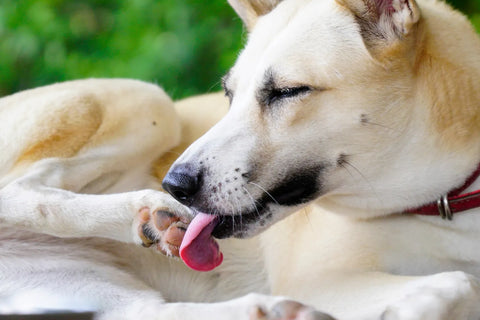
Why Do Dogs Lick Their Paws?

Why Do Dogs Whimper & Make Noises in Their Sleep?
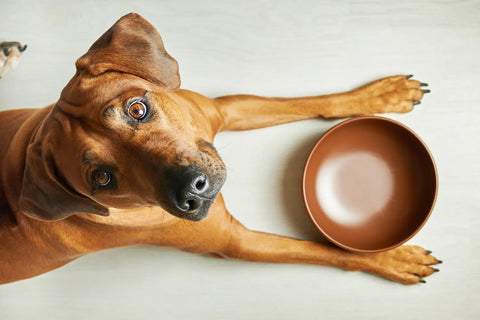
Healthy Vet-Approved Homemade Dog Food Recipes

How To Cook Sweet Potatoes for Dogs


